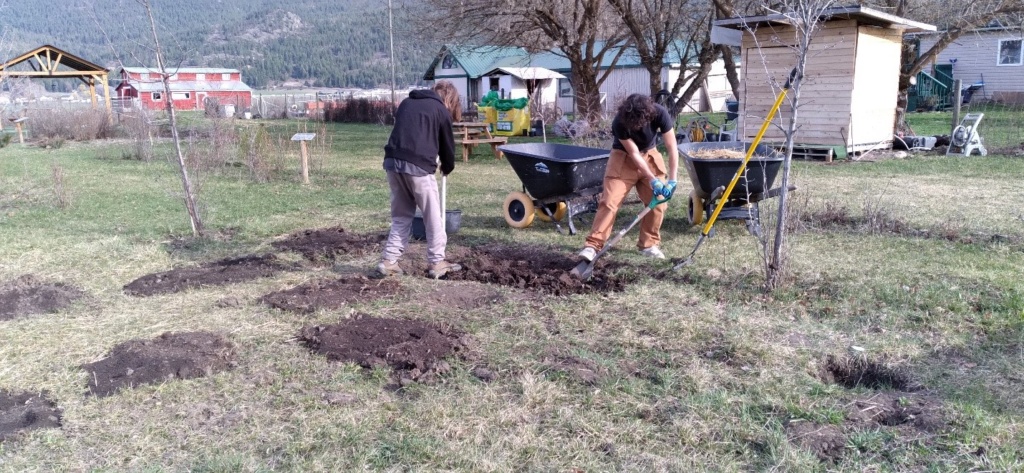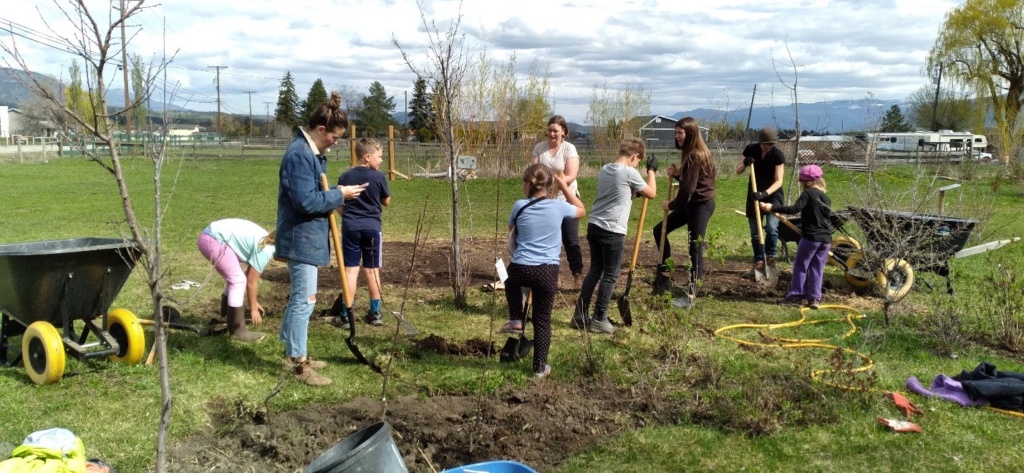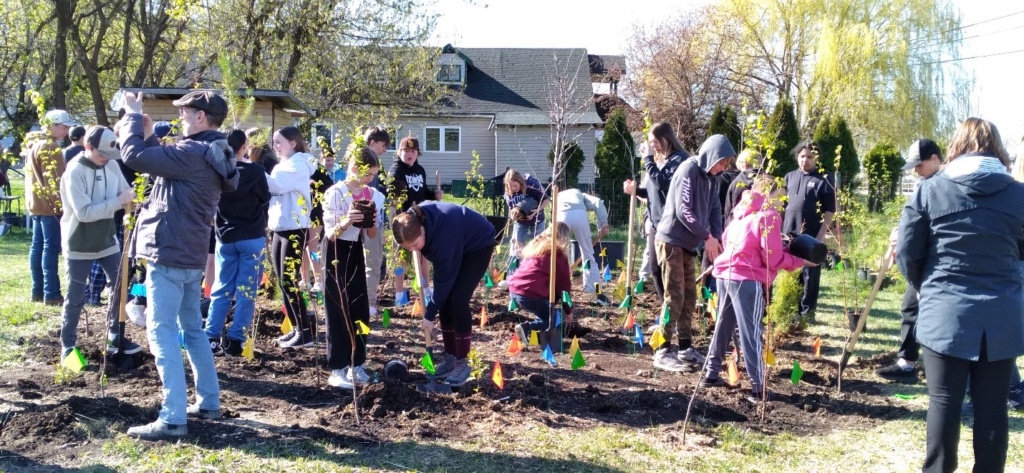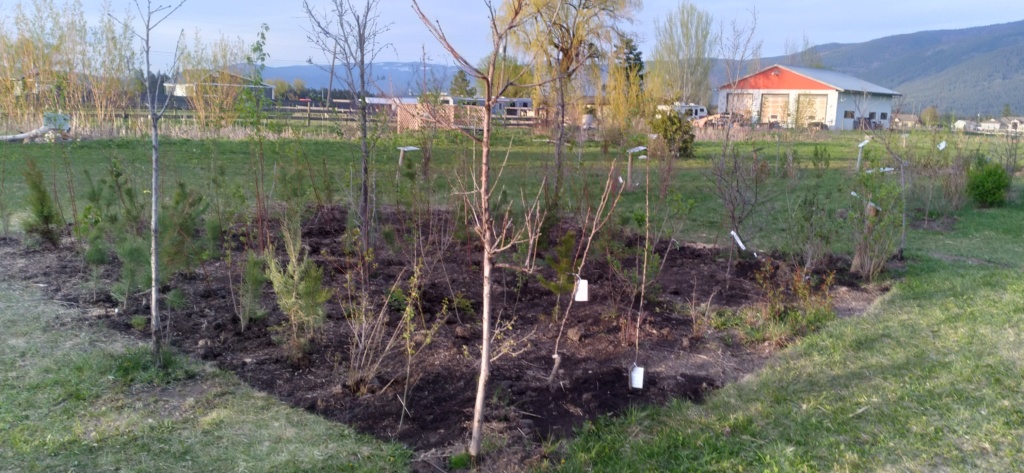Our third mini forest at Pleasant Valley Wetland Heritage Park was created in April 2024 to integrate with the Edible Trees Forest Garden planted in 2020. The whole area was dug by hand to ensure that existing plants and trees were not disturbed by an excavator. We devised a method of removing the grass layer, digging out the clay soil roughly 1m2 to a depth of approx. 1m, and placing the straw and leaf mulch in the bottom, before replacing some of the clay soil plus a layer of enriched topsoil. We then went on to the next square. Eventually, all the squares merged together. This method worked really well as the whole operation was manageable with the use of just three wheelbarrows, shovels and willing volunteers.




Developed by the Japanese botanist and plant ecology expert Professor Akira Miyawaki, this method of afforestation draws inspiration from nature’s ecosystems to create 100% organic, dense and diverse pioneer forests. Such forests grow 10 times faster and sustain 100 times more biodiversity. Density is the key, with the inclusion of a wide variety of native species. Compared to a conventional forest, the mini forest boasts 30 times or more carbon-dioxide absorption. They can be in any place where sunlight is available for at least 8 hours a day and will attract local pollinators, butterflies, snails, amphibians and birds.
Miyawaki forests grow in two to three years and are self-sustaining. In as few as three years, there will be the beginning of a native forest that is completely chemical and fertilizer free with little to no maintenance after two years. They are gaining popularity in Canada as a nature based, climate change action that is highly visible and scalable to any size, adding value to any small available urban or suburban space, acreage, park or private yard. We hope this initiative will inspire municipalities, homeowners, schools, businesses and others to create their own mini forests to help build climate resilience.
![]()
